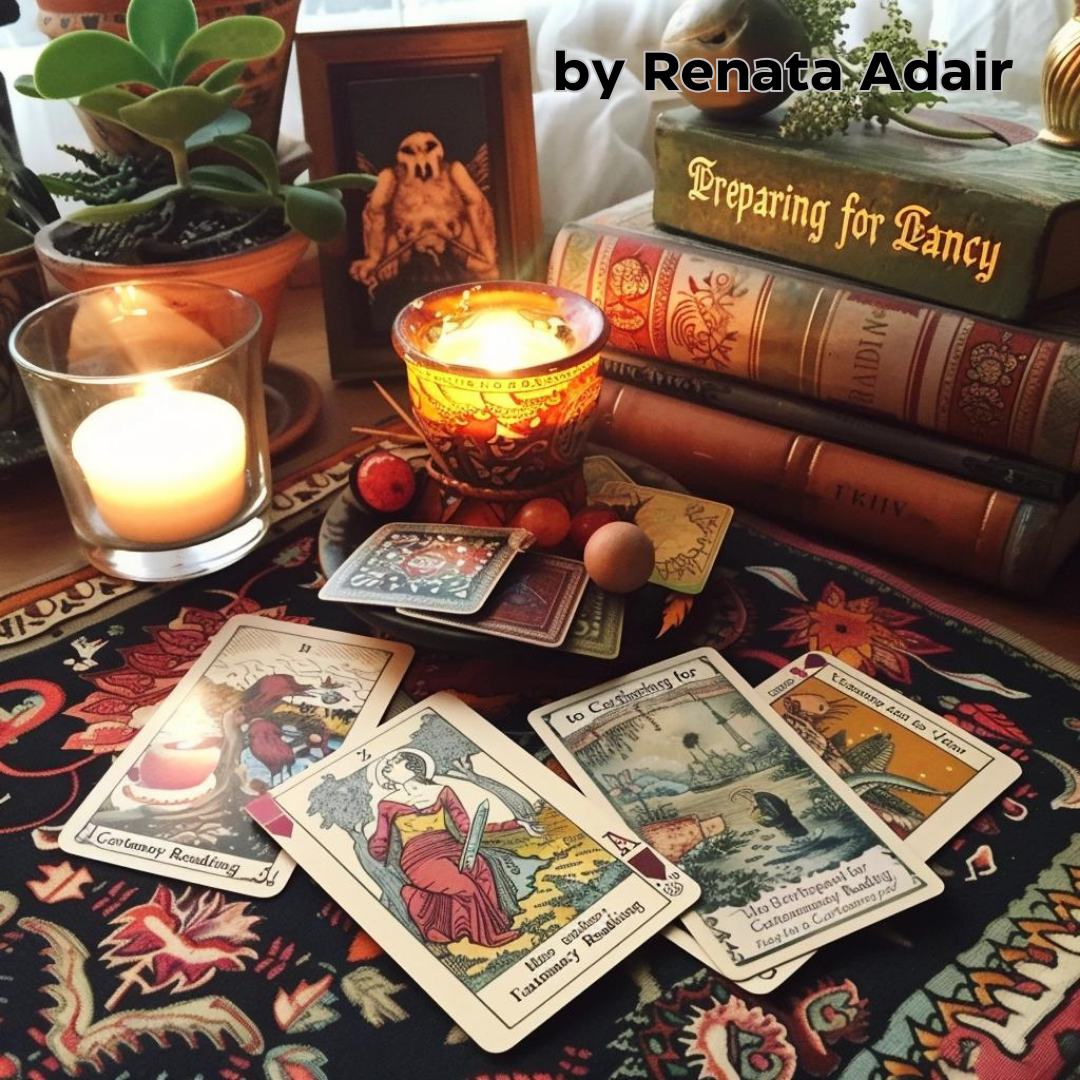Introduction to Cartomancy
Cartomancy is the practice of using a deck of playing cards to gain insight into the past, present, and future. This ancient form of divination has been used for centuries to provide guidance and answers to life’s questions. Unlike Tarot, which uses a specialized deck, cartomancy employs the standard 52-card playing deck, making it an accessible and intriguing method for those interested in exploring divination.
The Deck and Its Meanings
In cartomancy, each card in the deck has a specific meaning. These meanings can vary slightly depending on the reader, but generally, they align with traditional interpretations. Here’s a basic guide to the meanings of the suits and some key cards:
Suits and Their Meanings
- Hearts (Cups in Tarot)
- General Meaning: Emotions, relationships, and family.
- Key Card: Ace of Hearts – New beginnings in love or happiness.
- Diamonds (Pentacles in Tarot)
- General Meaning: Material aspects, money, and career.
- Key Card: Ace of Diamonds – New opportunities or ventures, financial gain.
- Clubs (Wands in Tarot)
- General Meaning: Creativity, action, and ambition.
- Key Card: Ace of Clubs – New beginnings in work or creativity, inspiration.
- Spades (Swords in Tarot)
- General Meaning: Challenges, conflicts, and intellect.
- Key Card: Ace of Spades – Significant changes, endings, and new insights.
Key Cards and Their Meanings
- King of Hearts: A fair and loving man, possibly a father figure.
- Queen of Diamonds: A woman of financial independence and practicality.
- Jack of Clubs: A youthful and energetic individual, often a bringer of good news.
- Ten of Spades: Represents endings and can indicate a crisis or difficult time.
Basic Cartomancy Spreads
There are various spreads used in cartomancy, each designed to answer different types of questions or provide different types of insights. Here are three popular spreads:
1. The Three-Card Spread
This is a simple spread used to gain insight into past, present, and future.
- First Card: Represents the past.
- Second Card: Represents the present.
- Third Card: Represents the future.
2. The Five-Card Spread
This spread offers more detail and can be used for more complex questions.
- First Card: The present situation.
- Second Card: The challenges or obstacles.
- Third Card: The past influences.
- Fourth Card: The near future.
- Fifth Card: The potential outcome.
3. The Celtic Cross Spread
A more detailed spread that provides a comprehensive view of the question at hand.
- First Card: The present situation.
- Second Card: The challenge.
- Third Card: The past foundation.
- Fourth Card: Recent past.
- Fifth Card: The goal or aspiration.
- Sixth Card: The near future.
- Seventh Card: The self-perception.
- Eighth Card: External influences.
- Ninth Card: Hopes and fears.
- Tenth Card: The outcome.
Conducting a Cartomancy Reading
When conducting a reading, it’s essential to create a calm and focused environment. Here are steps to perform a reading:
- Prepare the Deck: Shuffle the deck thoroughly while focusing on the question or situation at hand.
- Draw the Cards: Depending on the spread you choose, draw the necessary number of cards.
- Interpret the Cards: Use your understanding of the card meanings and positions in the spread to interpret the message.
- Reflect and Conclude: Summarize the insights gained from the reading and consider how they apply to the question or situation.
Enhancing Your Cartomancy Skills
- Practice Regularly: The more you practice, the more intuitive your readings will become.
- Keep a Journal: Record your readings and reflect on their accuracy and insights over time.
- Learn from Others: Join cartomancy communities, read books, and learn from experienced readers.
Conclusion
Cartomancy offers a fascinating and accessible way to gain insight into your life and future. By understanding the meanings of the cards and practicing regularly, you can develop a deeper connection with this ancient divinatory art. Whether you’re seeking guidance or simply exploring, cartomancy provides a unique and powerful tool for self-discovery and foresight
